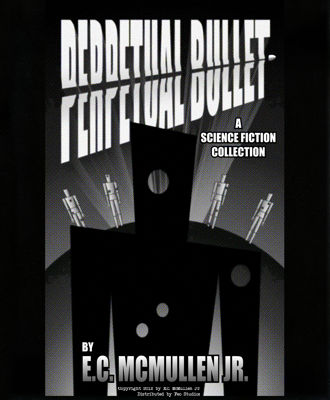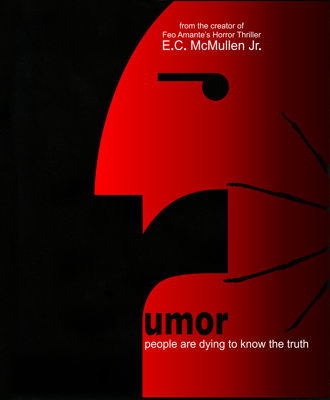 |
 |
Review by E.C. McMullen Jr. |
|
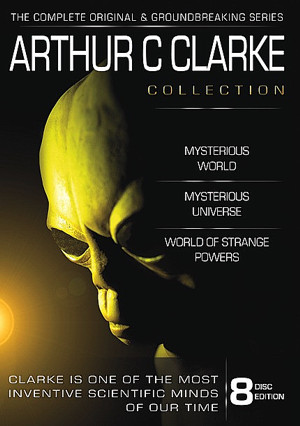 ARTHUR C. CLARKE COLLECTIONMysterious World - 1980Trident Television, Yorkshire Television (YTV), Independent Television (ITV) World of Strange Powers - 1985 Mysterious Universe - 1994 |
|||
"I don't pretend we have all the answers. But the questions are certainly worth thinking about."
- Arthur C Clarke
There is probably a word for it. When you truly miss someone you never met, but were influenced by their work. Singer Don McLean's hit song, Vincent (Starry Night) is perhaps the most readily recognized example, but there are others as I'll mention later in this review.
My point is, Arthur C. Clarke, who I never met, never conversed with in letters or any other means, miss so terribly by his absence. His work both in fiction and science and how he did his best to improve the world, means so much to me. So much in fact, that I can gauge how much time I'm spending reading his work, or watching him at his work, by the moment I become overwhelmed by sadness at his loss, and have to stop and do something else.
As a young man, I grew up watching these three television documentaries in the 1980s and 1990s before there were machines trustworthy enough to record them (them old days, by cracky! They stunk!). That means I had to set aside a specific time of the day where I'd be nowhere else but in front of my TV to watch this show. Everything else had to sit in the waiting room of my life until my show was over.
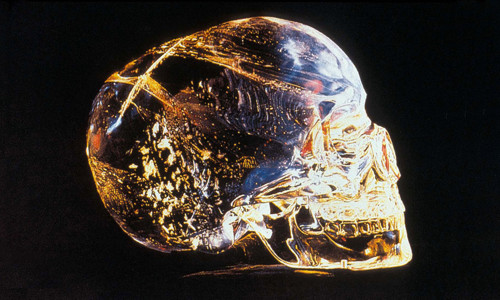
The mystery of this crystal skull meant a lot to Arthur
and was the show's mascot throughout the sporadic 15 year run.
Now you can take all of this to mean I'm biased and I wouldn't blame you, although truth be told I've had to write bad reviews of the work of some of my favorite people before (John Carpenter, James Cameron, Quentin Tarantino, Ridley Scott).
That said, this was personally difficult for me to get through, as much as I enjoyed it.
In the 1960s and 1970s Arthur C Clarke was a scientist who was also an engineer. Not only could he come up with great theories, but he could make them work. Thanks to a visually fascinating but tepid movie based on one of his science fiction novels, Arthur was also widely regarded in the world.
Yet despite all of that, whenever Clarke published a book in the 1970s, his publishers chose to make it look like something from a crackpot that Clarke detested. His publishers did this because that cover style sold books whether a fraud wrote it or Clarke wrote it. You can imagine Arthur's chagrin to get that line from his publishers.
This must have been especially hard when so many fiction writers choose to dumbly accept the snake-oil for inspiration over the extraordinary implications inherent in the real ones.
So when some documentary producers got together to debunk frauds from around the world, they approached Arthur to see if he would like to host it. He wouldn't have to do much, only introduce the short documentaries they were making. A chance to debunk the popular frauds of his era?
* Living In Retreat Retreat - Example: The luxury resort is used as a retreat by the rich and famous. |
Clarke turned them down.
As a scientist, his approach was not to predetermine that the mysteries they explored were false, but if they could be true.
Realigned in this manner, show producers John Fairley, John Fanshawe, and Simon Welfare agreed. That's when Arthur agreed.
The first series of 13 episodes were released to British television featuring Arthur C Clarke, highly esteemed and respected scientist of England, the country's great national treasure, speaking to the world from his home in Sri Lanka. "Living in retreat"* as they said in those days.
Arthur would love nothing more than to discover an actual Bigfoot or Loch ness Monster, but he was too wise to allow himself to be made a fool for his desires. His show wasn't going to be a glitzy snow job like Alan Landsburg's IN SEARCH OF ANCIENT MYSTERIES or IN SEARCH OF...
"The universe is such a strange and wonderful place that reality will always outrun the wildest imagination..."
- Arthur C Clarke
Mysterious World set out to prove whether or not the chroniclers who told people about such mysteries, were being honest. Most were not and it wasn't a case that these were gullible people fooling themselves, but intentional con artists who were revealed to be the frauds they truly were/are.
Some of the episodes also went into great depth regarding mysteries that, despite the quacks of the world, had no real answers. The most scientifically accurate thing that could be said was, "We don't know."
The show was a moderate success world wide, which inspired another run at it.
Moreover, it was a pinprick to the faith-healing hucksters of IN SEARCH OF... People of that era would watch the way mysteries were presented by Clarke, then watch the same mysteries breathlessly presented with dulcet gravitas on IN SEARCH OF... and say, "Wait a minute."
Arthur began to gain notice. Yet he wasn't about to retread his tire. So in this second run, instead of looking at the mysteries that people said they Saw, he focused on looking at the mysteries that people said they Were.
From "I Saw Faith-Healing" to "I Am a Faith-Healer".
"The only way of discovering the limits of the possible is to venture a little way past them into the impossible."
- Arthur C Clarke
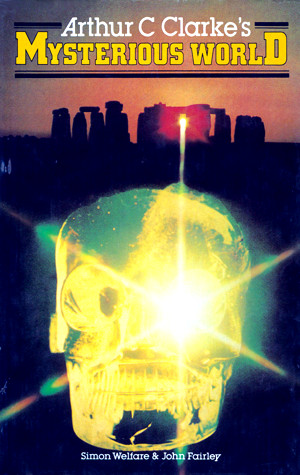 The One-Two punch against ignorance also included books in the series |
World of Strange Powers went after all the sacred cows and did more than just reveal the frauds. A few of the 13 episodes revealed that some of these people with extraordinary powers were telling the truth.
- And they proved it -
Stigmata for one. The mind's amazing ability to radically alter the physical appearance of the body - to open and close wounds by thought alone - has extraordinary implications. They found only one living example of a person who was so devout to Jesus that she bled from the same places on her body where she believed Jesus was crucified.
Nearly 10 years later, Arthur agreed to one more go with the series. One more time where they would explore everything else, including the scientific advances and discoveries that could shed light on the earlier mysteries they had shown.
"The universe is not only stranger than we imagine, it is stranger than we can imagine."
- Arthur C Clarke
Mysteries Universe hit the airwaves in 1994. This was the producers last shot at this so they doubled the episode count to 26.
I promise you will not be wowed by Arthur C Clarke talking to you. The man was self-conscious and uncomfortable talking to groups of people and cameras. He simply didn't have screen presence. Episode after episode he will grow on you and what he is talking about is the fascinating part. Unlike the frauds who cover the same territory and try to dazzle you with bullshit, or give you answers in the form of a question ("Did ancient astronauts give ancient Aztecs technology that the rest of the world from China to Rome had in abundance for over 1,500 years?"), you won't be asked to "Open your mind" to stupifyingly simplistic answers either.
So why did Arthur C. Clarke pursue this? Unlike so many other scientists, Clarke really wanted to believe. His mind buzzed at the prospect of lost knowledge. He would have loved nothing more than finding the evidence he searched for. He just wasn't going to be a gullible idiot about it.
Most of the three television shows were shot on standard 16mm film, common in their day for television, and to a point, that means that they translate better to modern high definition televisions than the videotape of that era ever will.
Yet because it was shot for television, expect a lot of graininess. For their part, this 8 DVD collection from ITV Studios and VEI looks and sounds great.
For an experience that is mind-expanding, thought-provoking, and educational, this Arthur C Clarke collection is worth your time.
5 Shriek Girls.





This review copyright 2014 E.C.McMullen Jr.

|
| GET COVERED | |
| YOU MIGHT ALSO LIKE THESE | |||
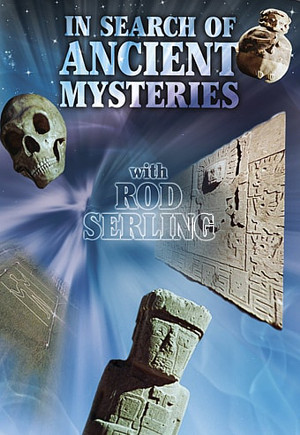 |
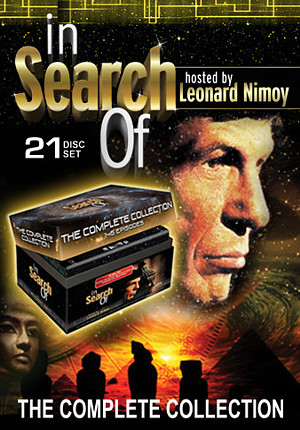 |
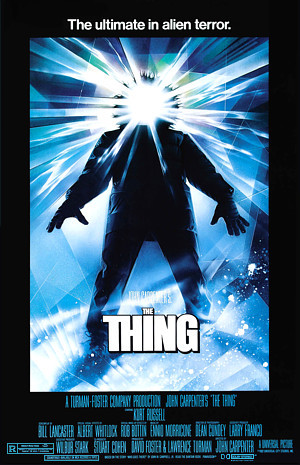 |
|
| Rod Serling's IN SEARCH OF ANCIENT MYSTERIES MOVIE REVIEW |
LEONARD NIMOY'S IN SEARCH OF... DVD REVIEW |
John Carpenter's THE THING MOVIE REVIEW |
|
FEO AMANTE'S HORROR THRILLERCreated by:E.C.McMullen Jr. FOLLOW ME @ |
| Amazon |
| ECMJr |
| Feo Blog |
| IMDb |
| Stage32 |
| X |
| YouTube |
| Zazzle Shop |
